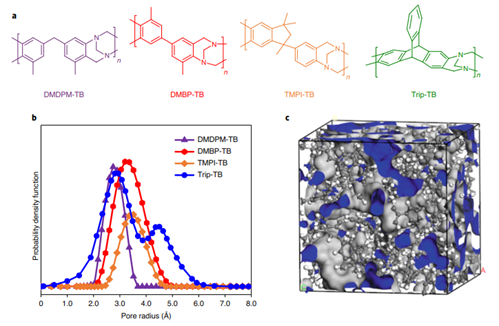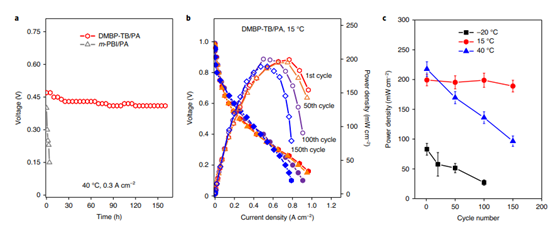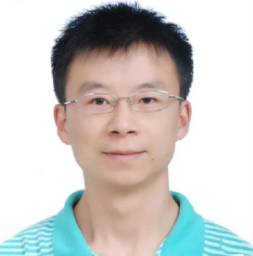This study entitled “Fuel cells with an operational range of –20°C to 200°C enabled by phosphoric acid-doped intrinsically ultramicroporous membranes” was published in the Nature Energy on 03 January 2022.
This work was supported by National Natural Science Foundation of China (grant nos. 21835005 and 52G15023), etc.

Figure 1

Figure 2

Figure 3
About the author:

Nanwen Li is engaged in the research and development of functional polymer separation membrane materials related to energy and environment for a long time. He received his doctor's degree in organic chemistry from the State Key Laboratory of Polymer Chemistry and Physics, Changchun Institute of Applied Chemistry, Chinese Academy of Sciences in 2009. He has successively worked as a Humboldt scholar and postdoctoral researcher at Hanyang University in South Korea, Martin Luther University in Germany, National Research Council in Canada, Penn State University and Georgia Institute of Technology. He has studied under William Koros, an internationally renowned membrane scientist and a member of the American Academy of Sciences. He also studied under Michael Guiver and Professor Young Moo Lee. His articles were published in international academic journals such as J. Am. Chem. Soc., Angew. Chem. Int. Ed., Energy Environ. Sci., Macromolecules, J. Membr. Sci. et al., with cumulative impact factors exceeding 100 and citations exceeding 700. Since 2014, he has been working at the Shanxi Institute of Coal Chemistry, Chinese Academy of Sciences.
Contact:
Email: linanwen@sxicc.ac.cn
© Institute of Coal Chemistry, Chinese Academy of Sciences, All Rights Reserved
Address: 27 South Taoyuan Road, Taiyuan, Shanxi, P.R.China
Tel: (86)351-4041627 Email: sxicc_en@sxicc.ac.cn